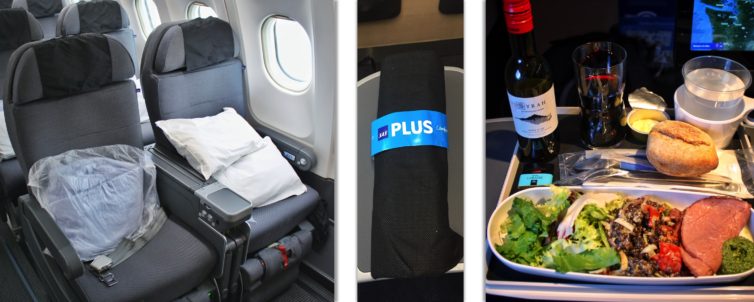
When it comes to the passenger experience on long-haul flights, the gap between economy and business class just keeps getting bigger. Today’s business class is all about universal aisle access, suites with doors, and other features that used to just be for first class. Back in economy, seats and legroom are tighter, and amenities are disappearing.
But lucky for us, many airlines are offering a new island of refuge in the middle of the gulf between economy and business: so-called “premium economy.” Oxymoron? Maybe. But if it’s a way to take some of the harsh edge off of flying in economy, without having to shell out big bucks for business class, then consider us interested!
We recently did some flying with SAS Scandinavian Airlines, whose long-haul A330 and A340 fleet recently got a major interior makeover. On the outbound to Copenhagen we had a blast trying out their new business class, but on the way back we made sure to score a seat in SAS Plus, their premium economy cabin. The seat itself was more economy-plus than business-minus, but amenities like lounge access, free WiFi, and fast-track airport security were a great way to sweeten the deal. All in all, SAS Plus did a great job of making economy class much more comfortable and fun.
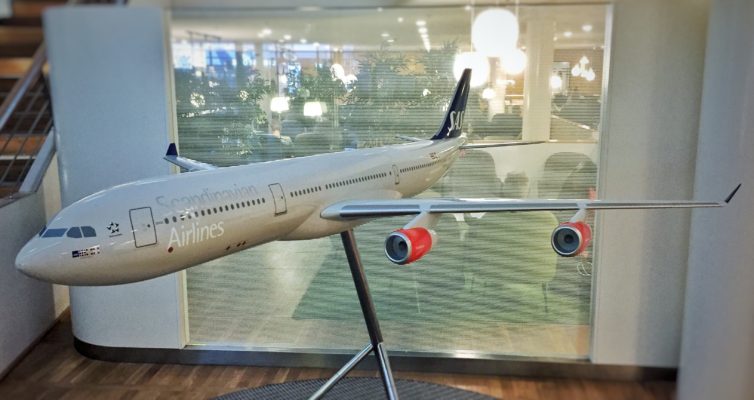
Photo: Manu Venkat | AirlineReporter
Read on for our full report and our thoughts on whether SAS Plus is worth it on your next trip.
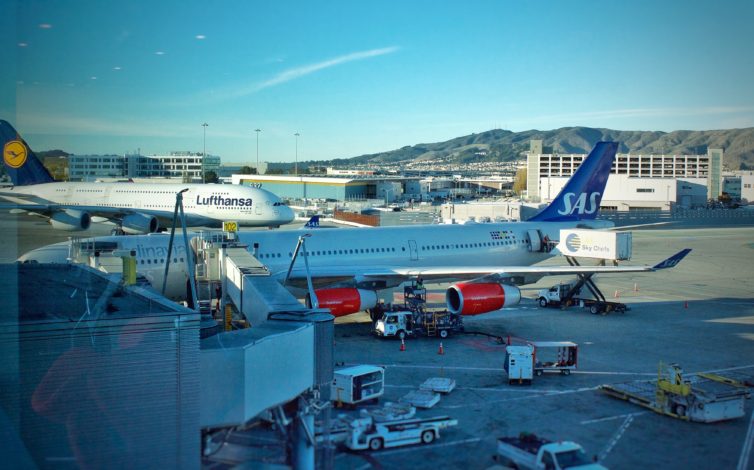
Our ride, looking sleek in red and blue – Photo: Manu Venkat | AirlineReporter
SAS Scandinavian Airlines has a lot of history under its belt — over 70 years’ worth, in fact. It was first to offer a regularly scheduled transpolar flight way back in 1954. More recently, it was a founding member of the Star Alliance. It continues to make big moves, expanding its US route network into Miami and Los Angeles to solidify its status as the airline with the most flights between the US and Scandinavia.
But as of a few years ago, SAS’ business class on its long-haul A340 and A330 fleet was stuck in the past, with a 2-2-2-across layout and only angle-flat seats. The airline ordered a few A350s but deliveries aren’t expected until late next year. In the meantime SAS needed to do something to keep its existing fleet from aging out of relevance. So starting last year it launched a massive effort to reinvent its flagship premium cabins.

We got a chance to experience SAS’ reimagined business class for ourselves and we found a lot to like — all documented in this trip report. And as suckers for aviation nostalgia, we’re glad that travelers will have the chance to fly the classic A340-300 for a while longer, and won’t have to sacrifice on style or comfort to do it.
Read on and join us on a Scandinavian adventure for the ages!
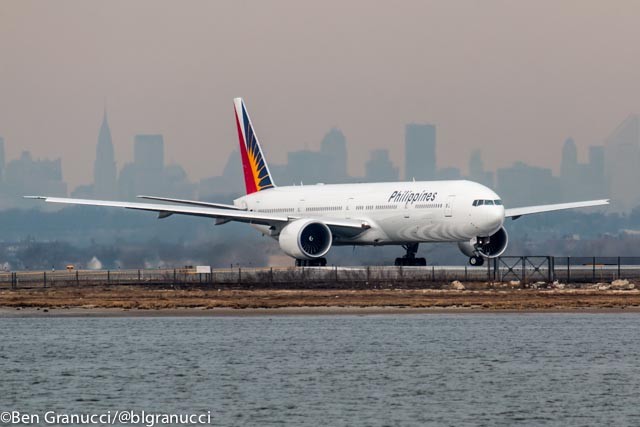
A Philippines Airlines’ Boeing 777-300ER
I’ve long said that New York is one of those cities that almost every long-haul airline in the world would like to serve. Maybe it’s because New York is home to the United Nations, or because nearly every nationality and ethnicity is represented along the eastern seaboard. Or maybe it is just the prestige of flying to the “greatest city in the world.” Whatever the reason, it benefits both AvGeeks and travelers with a wide variety of airlines flying to a huge number of destinations, both near and far.
Almost every major long-haul airline in Europe serves either John F. Kennedy International Airport (JFK) or Newark Liberty International Airport (EWR). JFK also sees several South American airlines, a few of which have added long-haul aircraft specifically to serve New York. All of the major Middle Eastern carriers fly to JFK, in some cases several times a day. And while JFK has long had flights from a few airlines in East Asia, recent years have seen several new airlines begin service, while a few existing carriers have added additional flights.
On Monday, March 18th, Philippine Airlines (PAL) became the latest Asian airline to begin flying to New York. Or, should I say, resume flying to New York.
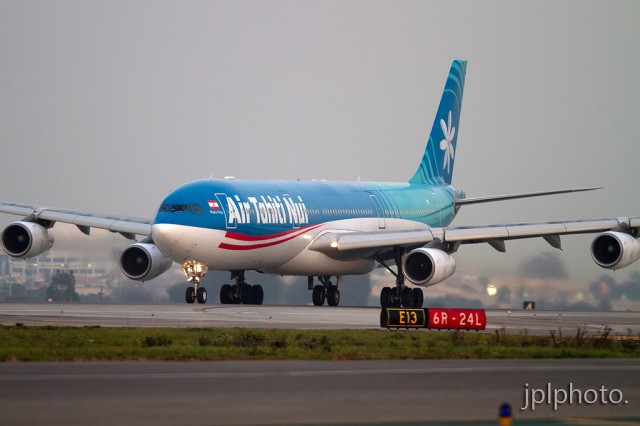
Air Tahiti Nui Airbus A340-300 (F-OLOV) about to leave LAX. Photo by Jeremy Dwyer-Lindgren.
Air Tahiti Nui is a small airline based out of Faa’a International Airport in Papeete, Tahiti. They operated a fleet of only five Airbus A340-300 aircraft that are set up in a three class configuration. Each one of the aircraft has a unique name of one of the local islands: Bora Bora (F-OJTN), Mangereva (F-OJGF), Rangiroa (F-OSEA), Moorea (F-OSUN) and Nuku Hiva (F-OLOV). The airline was created to increase tourism and operations commenced on November 20, 1998.
Air Tahiti Nui’s livery is one that definitly stands out and I think in a nice way. The blues match the waters of Tahiti and the red stripping matches the flag of French Polynesia.





